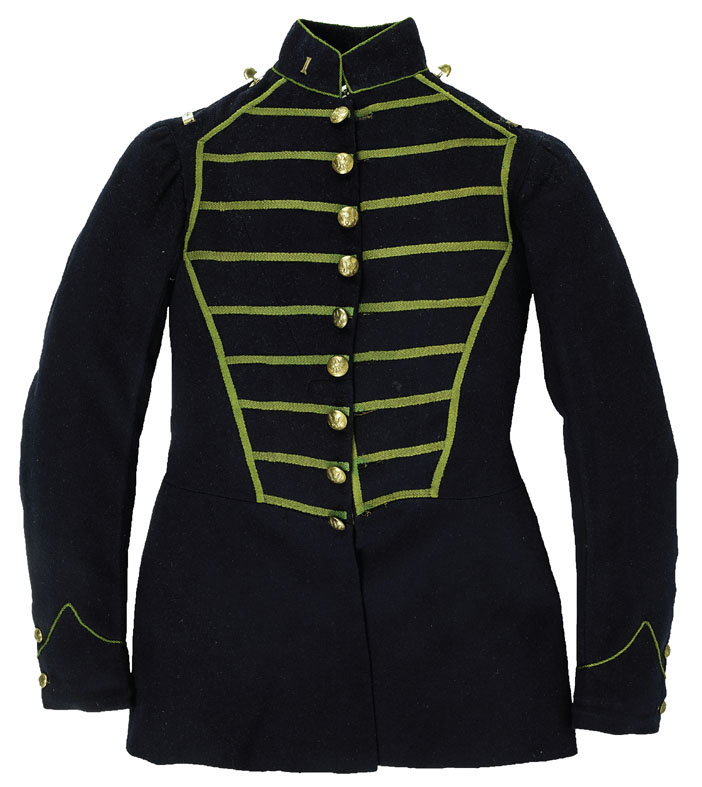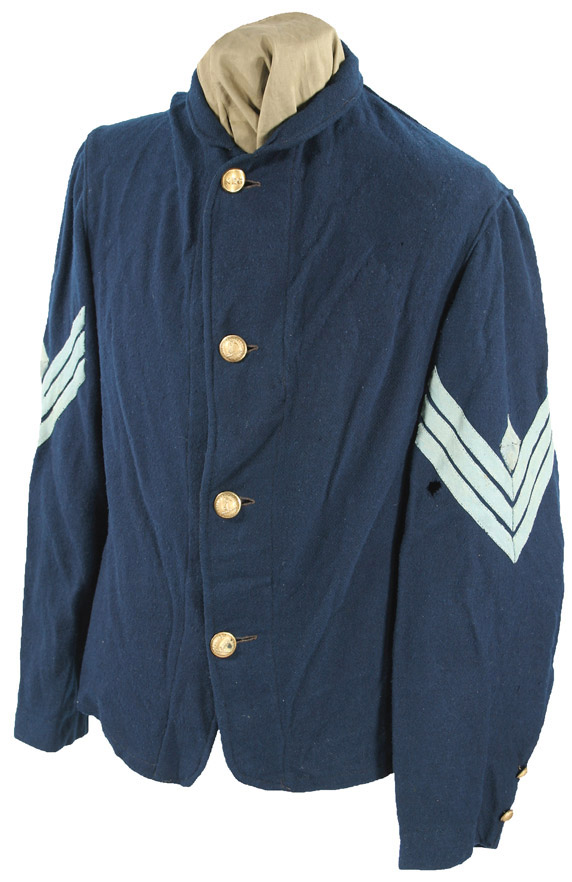
1863
>THE 4TH REGIMENT UNITED STATES CAVALRY WAS ORIGINALLY FORMED in 1855 as the 1st Cavalry. At that time there were in the service five mounted regiments: the 1st and 2nd Dragoons, the 1st Mounted Rifles, and the 1st and 2nd Cavalry. With the outbreak of the war, these regiments were renumbered as cavalry. The dragoons and rifles were the senior regiments and consequently received the first three numbers. The 4th Cavalry, the old 1st Regiment, was initially broken up, with Companies A and E serving with the Army of the Potomac until November 1862. Company D remained in the West to see action from the early battles in Missouri to the capture of Macon, Georgia, in April 1865.
The 4th was brigaded with the 4th Michigan and the 7th Pennsylvania Regiments in what was known as the Saber Brigade because of its skill with that weapon.88 This trooper is holding the guidon of Company D and stands ready for the order to advance. His equipment is the standard cavalry gear, with his blanket rolled to the rear of his model 1858 saddle and overcoat to the front. The blue cavalry saddle blanket with the yellow stripe is covered by his saddlebags. The saber is the model 1840.

Adress coat for a musician of a rifle regiment trimmed with green worsted tape on the chest and a cord on the collar and cuffs. SMITHSONIAN INSTITUTION
Federal cavalry regiments carried only a silken regimental standard. The absence of the United States colors was made up for by the silken guidon with stars and stripes issued to each company, which was adopted in 1862. The guidon measured 3 feet, 5 inches from the staff to the end of the swallowtail and 2 feet, 3 inches on the staff.89


Asergeant of infantry, four-button sack coat and trousers worn by John E. Bickford, who served in the 4th Massachusetts in the Battle of Big Bethel and in Company C of the 38th Massachusetts at the Battles of Port Hudson, Opequon Creek (where he was wounded in the foot), and Cedar Creek (where he was slightly wounded again in the waist, and also had three rounds go through his haversack). Note the tear by the bullet in the coat. J.T. Martin, a major contractor for army clothing, made the trousers. MICHAEL CUNNINGHAM COLLECTION

Forage cap of Private J.K. Hundecker of Company C of the 179th Pennsylvania Militia. The 179th was organized in late 1862 and did mostly garrison duties in Virginia and then was mustered out in July 1863. JAN GORDON COLLECTION

Federal issue, four-button sack coat with red worsted chevrons for a first sergeant of artillery. WEST POINT MUSEUM, HIGHLAND FALLS, NEW YORK

Four-button, regulation unlined blouse worn by First Sergeant Frank Fitz of the 44th Massachusetts Volunteers. Fitz customized this garment by shortening the sleeves by tacking them down inside and replacing the top eagle button with a New England Guards “NEG” button. DON TROIANI COLLECTION